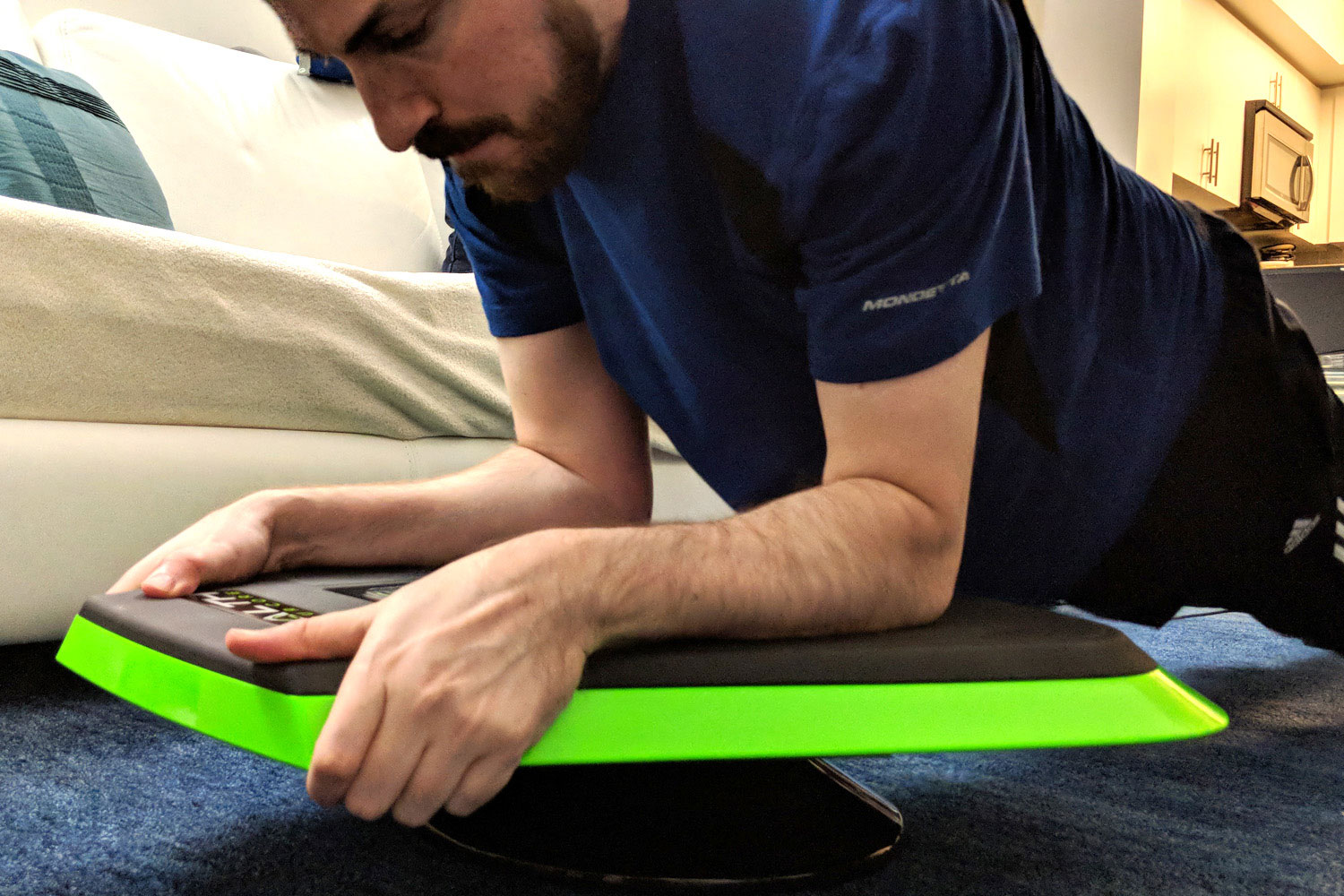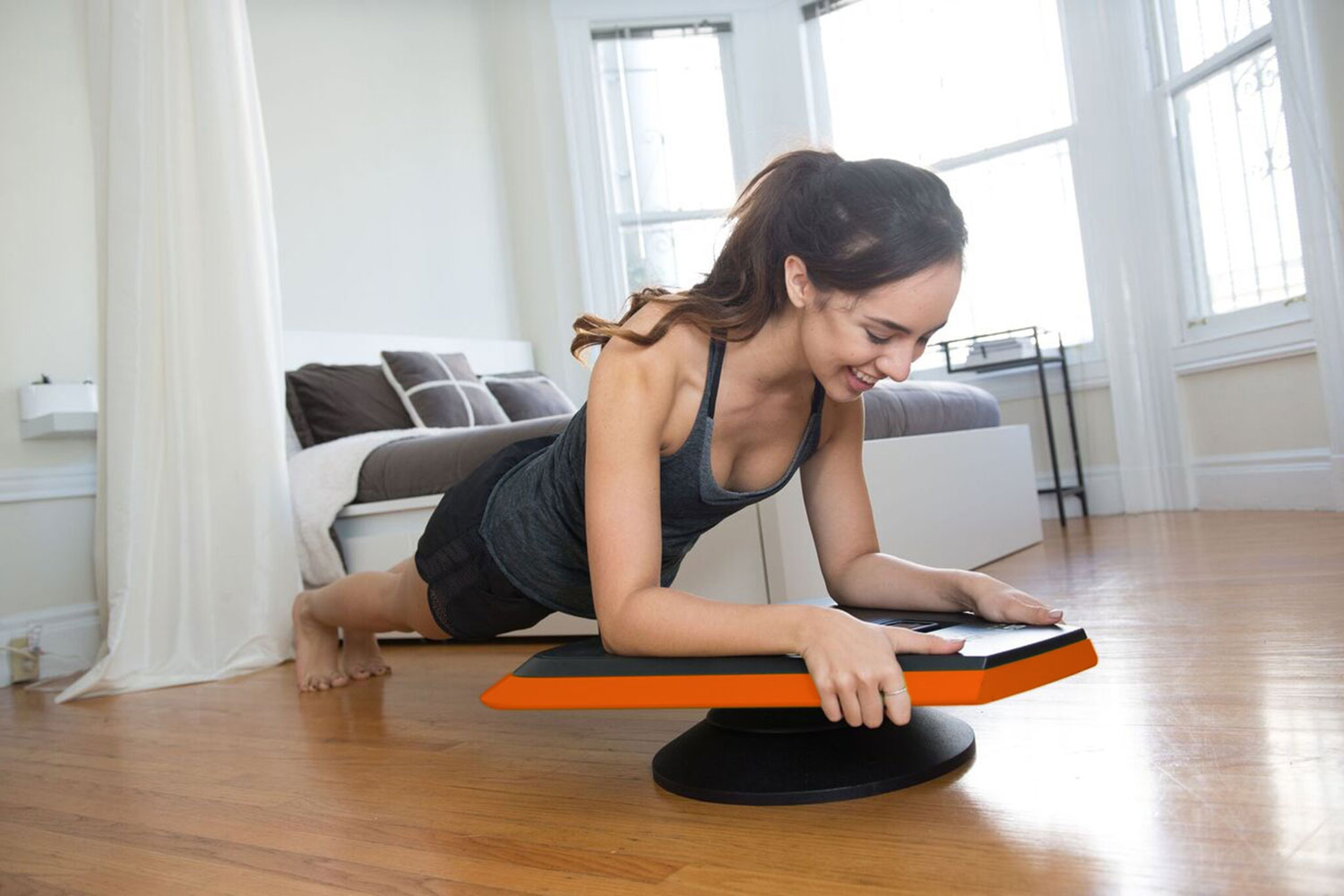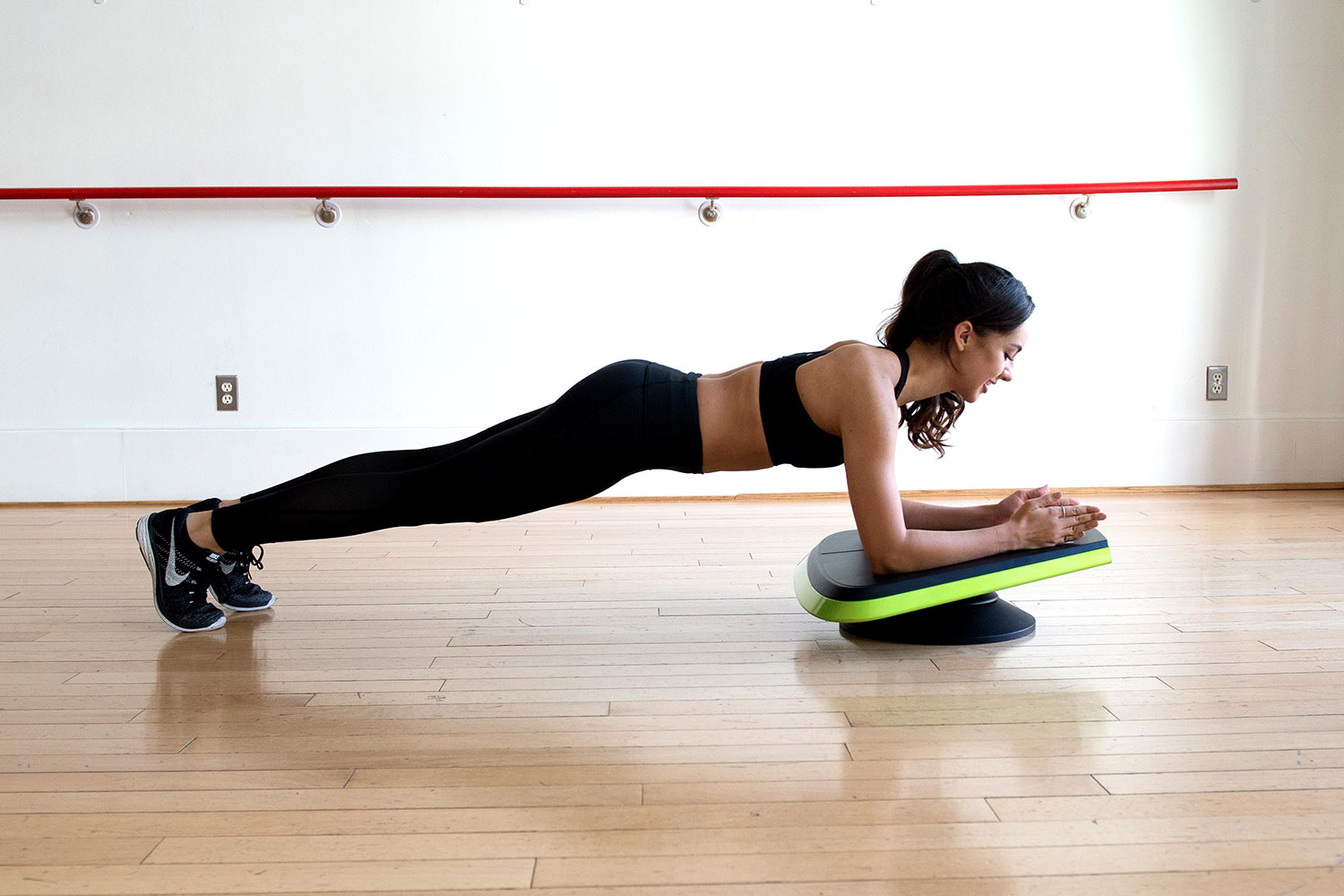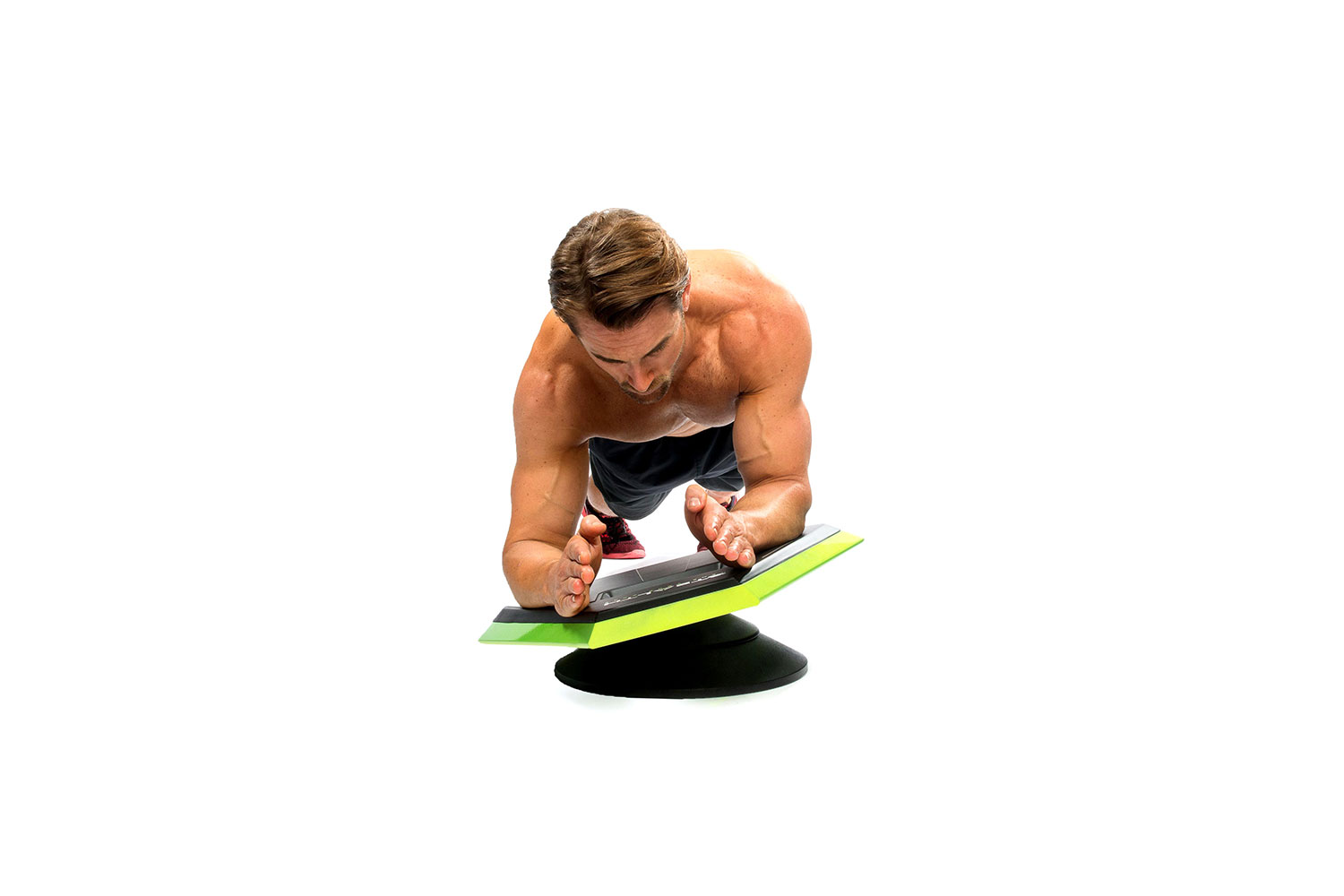Achieving the feat of toned abs is a pipe dream for many. While the exercises and diet required to get them feels like a daunting task unto itself, the sheer act of doing a plank – or crunches and sit-ups until your stomach aches – is so tediously boring.
Since this is something so many people relate to (including us), we decided to give a new device called the Stealth Core Trainer a brief run to see if it could somehow make working out your core an enjoyable experience. What turned out to be a balance board with no real upkeep, the Stealth Core Trainer seems able to make a grueling fitness regimen feel less tortuous. All told, this low-tech device had us pushing harder every time we used it – and to be honest, it made us want to get active.
The Stealth Core Trainer is premised on a do-it-yourself workout schedule.
There’s no shortage of specialized or tailored workout routines targeting abs — they’re all over the place. Thing is, not everyone can afford a personal trainer, nor do they always feel dedicated enough to make that gym membership worth every penny. This is exactly where the Stealth Core Trainer can make a difference. Premised on a do-it-yourself workout schedule, one of the device’s strong suits is that you can either use it at home, at the gym, or really anywhere at your leisure.
Having started out as a Kickstarter campaign, there are now two versions widely available. The Stealth Professional handles more weight (up to 400 pounds) and uses tougher materials. It’s designed for use in gym facilities and is manufactured in the United States, coming standard in green or black the price of $300. Conversely, the Stealth Personal is made in China and supports up to 250 pounds, with materials that are less rigid. It comes in orange at $200. For our review, we opted for the Professional version to get a true sense of the cream of the Stealth Trainer crop.
Both are functionally the same. Each makes use of a balancing board elevated by a swiveling base underneath for a 360-degree rotational spin that also tilts forward, back, or side to side. On the top is a recessed portion to lay down a smartphone in landscape mode.
An inserted phone runs its free companion app called Game Your Core (iOS or Android), adding a particularly fun gaming aspect to the equation. There’s no Bluetooth or Wi-Fi connection between the two, however, as the board itself has no connectivity to it. It’s just a low-tech piece of thick plastic which utilizes the phone’s accelerometer and gyroscope to keep the game going.
The gist is that you position yourself on the board into a plank upon starting the Game Your Core app. The game is basic in that it uses a grid with glowing orbs and a floating reticle that you need to place and hold over the orb. The only way to do so is to shift forward or back, tilt to either side, or twist in any direction.
It’s simple yet effective in how it incorporates exercises for the abs, obliques, glutes, and lower back. There are no separate routines to target these areas, they just engage based on the shifting, tilting, and twisting which occurs during the game.
Walking the plank
The key with any exercise rests with proper form to engage the correct muscles. The Stealth Core Trainer doesn’t govern any of that, so there’s no guarantee you’d be doing a plank correctly. However, the simplicity here does offer better odds. Staying on the board is easy enough when doing a regular plank as the game does a short three-second countdown.
It’s simple yet effective in how it incorporates exercises for the abs, obliques, glutes, and lower back.
Over the course of our few weeks with the device, we tracked how well we could progress. At first, it was a bit tougher than anticipated, as we barely lasted a minute, collecting a pittance in points. But soon, we managed to rack up more points in the same amount of time. Why? Because we learned how to hit the orbs faster. Then, we were able to keep going for longer than a minute, until we got closer to two minutes after just two weeks of practice.
When booting up Game your Core, reaching the 50-point threshold is the initial milestone. Though each orb is worth just two points, smaller green dots randomly appear during games which act as combos to rack up an even higher score. Once we crossed 50, we could compete on the world leaderboard displayed on the app. Unsurprisingly, one look at this board was a touch depressing. A full 10 minutes with over 1,000 points? We weren’t feeling terribly optimistic.

Still, we cared less about overall stats and more about our own personal gains. A personal log detailed our highest scores and best times which was the area we focused on as it was the most attainable. Beating a score of 15 points, or 27 points, or 55 points was far more realistic than trying to out plank the world.
Turns out, we ended up enjoying the process. We stuck to an off-and-on schedule for around three weeks of staggered sets totaling roughly 10 minutes each day. Stealth says three minutes daily is enough to start off. Because of this, we had no excuse. Who doesn’t have an extra three minutes each day?
Assessing results
We were fairly sore after the first few days but no different than we would have been after doing countless crunches or sit-ups. The whole core felt active and as we gained more confidence on the board – and the longer we stayed on it – the more efficient we became in scoring. Progress was quick, too. The competitiveness inherent in the Core Trainer just kept us going.
We were fairly sore after the first few days but no different than we would have been after doing countless crunches or sit-ups.
Truthfully, we didn’t notice too much of a visual difference in the mirror because we didn’t follow any sort of nutritional plan to go along with it. We did feel a little more core strength, however, and that was just after three weeks. Testimonials on the company site consistently show before and after shots based on 10-week periods that included something called “plank nutrition.”
We inquired about that, and as of this review, Stealth isn’t selling a complementary diet plan to go with the product. It’s also not paying you to work out, like some apps claim but there’s no denying the worth of Stealth’s reward – i.e. making fitness and working out fun.
Even so, we appreciated that the board also triggered other muscles like our shoulders, upper back, and legs. It’s not a full body workout, by any means, but it’s far less isolated than doing simple crunches or planks. We had the sore muscles to prove it.
The app itself is pretty basic and rudimentary when compared to flashy games permeating phones these days, but it didn’t matter. It had one job to do, and it did it.
Conclusion
As the old adage goes: No pain, no gain. The Stealth Core Trainer essentially guarantees some pain in the beginning, meaning you’re likely to feel the gain more than you’ll see it. Without the dietary habits to go with such a workout, this thing won’t deliver chiseled abs on its polyurethane support pad.
It’s also expensive, which is why the company launched the Stealth Personal in January for the lower $200 price point. Stealth markets the cheaper option as an ideal choice for home use as it’s reasonably portable, meaning you can take it around the house with little effort.
You will need to put in a more balanced effort (pardon the pun) to see results in the mirror, but we’re confident you’ll feel them after a few weeks spent regularly planking.
Stealth Personal Stealth Professional












